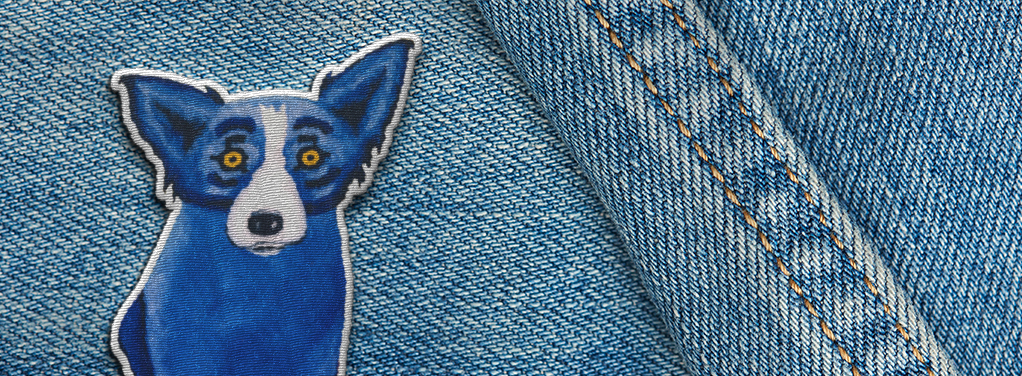News
Marketer Magazine: On The Record: Conducting Strong Interviews with the Media
How a Cajun Werewolf Launched a Louisiana Artist to International Acclaim
If there’s one thing Louisiana has in abundance, it’s creepy folklore. Many of the ghost stories and legends are just meant to scare kids into behaving, and the tales typically don’t have much impact outside of the local culture. But one, the Loup Garou (or Rougarou), inspired Cajun artist George Rodrigue, and set him on a path of commercial success and international influence.
In 1984, Rodrigue, already locally known for his post-impressionistic Cajun landscapes, was commissioned to create paintings for the book Bayou, a collection of disturbing and macabre Louisiana legends. Included in the collection was the Cajun story of the Loup Garou, a werewolf-like creature with mysterious origins.
The Loup Garou is most commonly known for eating misbehaving children, but it is also said to have threatened Catholics who didn’t observe Lent. The folktale also revealed that a Catholic who didn’t observe Lent for seven years would be transformed into a Loup Garou. Another more secular option for becoming a Loup Garou was to be cursed by a witch--just in case roaming the swamps looking for bad children or wayward Catholics didn’t sound like a good enough time.
The Loup Garou, typically described as having the body of a man and the head of a wolf, pushed Rodrigue's artistic license to its fullest, inspiring him to paint his own version: a small, blue dog. While not an obvious visual representation of the beast of legend, the Blue Dog as Loup Garou is still surprisingly creepy. The atmosphere around the dog is dark and murky, giving it an oppressive feeling. The saturated red of the house is reminiscent of blood, and the dog’s red-pupiled stare is intense. Combined, these elements created an uneasiness on par with the Loup Garou story. So, despite his unconventional approach, Rodrigue still perfectly conveyed the spirit of the Cajun werewolf folktale.
Rodrigue’s deceptively spooky Loup Garou painting captured people’s attention, but none more so than his own. He continued to paint his Blue Dog, which slowly evolved over time. Eventually the moody south Louisiana landscapes were dropped, as Rodrigue realized the Blue Dog was not just a symbolic Loup Garou, but its own entity. The dog’s red pupils were changed to black to tone down the creep factor, the colors got more vibrant and the general feel of the artwork became more lighthearted.
In 1992, Absolut Vodka commissioned Rodrigue to create an advertisement featuring his now more captivating canine. This changed the game for the artist as he realized the commercial value of his instantly recognizable creation. He faced a lot of criticism for his decision to continue painting the Blue Dog, which many people considered “not art.”
For an artist previously dubbed the “American Rousseau,” this seemed like a big step down from his fine art background. In an interview with his wife, Rodrigue said, “I took a giant leap into the future. I can’t tell you how many people told me I was crazy, I was stupid, I would ruin my art career.” Far from ruining his career, his Loup-Garou-turned-Blue-Dog paintings brought the artist massive success, some fetching prices of more than $200,000.
As with all commercially successful art, the Blue Dog spawned many imitators. Over the years Rodrigue made many statements about the influence of his Blue Dog on other artists, worrying that those who mimicked him were relying on a creative crutch and would never fully develop as artists.
In a 1998 New York Times article, he commented on one in particular who painted red cats and sold them close to Rodrigue’s New Orleans gallery. “I wish him luck, but a real artist wouldn’t do that, you know.” Rodrigue’s insistence on making this one subject his artistic focus for years is uncommon, as many people view it as “selling out.” But even though the Blue Dog was his steady theme, his artwork was never stagnant; it changed and grew —literally—eventually becoming metal sculptures more than 20 feet tall.
The key to Rodrigue’s success was his originality. His painting of the Loup Garou rejected all visual similarities to the commonly accepted look of this swamp-dwelling werewolf and created an image that was entirely his own. In 2013, Rodrigue and his Blue Dog passed away, but his artwork and influence on other artists lives on.
His family maintains the George Rodrigue Foundation of the Arts (GRFA) that, in addition to providing financial assistance in the arts and other areas, plans, develops and implements unique educational art programs that are specially designed to enhance and expand art curriculums, despite continuing state and federal cutbacks. To learn more about GRFA and its programs, click here.
